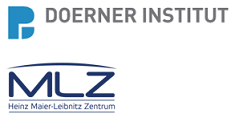Speaker
Description
Scientific investigations and archaeometric studies have played a major role in the field of archaeology, especially with regard to materials that have been transformed through human activity, like metals. Neutron imaging techniques are used to shed light on the inner structure of composite materials, but also can be used for elemental investigations. In addition, the combined use of X-rays and neutrons provides additional element-dependent information which is fundamental in case of multi-phase objects inhomogeneous objects. In this talk, I will give some examples of how neutron imaging at the ISIS neutron and muon source, in conjunction with other techniques, can be pivotal to improve our knowledge of ancient manufacturing processes of metals, their technological evolution over the centuries, and how they degrade over time. I will also present novel advances in the implementation of Neutron Resonance Transmission Imaging (NRTI), a non-destructive 2D quantitative elemental analysis technique, performed at the INES Italian Neutron Experimental Station INES beamline operating at ISIS. Neutron spallation sources have high epithermal neutron fluxes, which is a profitable energy range for elemental and isotopic material characterisation thanks to the presence of intense resonance structures in the neutron-induced reaction cross-sections. The NRTI technique is based on the absorption in the sample of incident epithermal neutrons whose energy correspond to the one of absorption resonances, resulting in a transmitted neutron beam containing dips univocally related to the elemental composition. With a position sensitive neutron detector it is therefore possible to obtain 2D radiographies of the sample. However, in contrast with standard neutron radiography, through NRTI it is possible to obtain the distribution of elements and isotopes by selecting a resonance of interest, enhancing the contrast between elements with similar neutron attenuation coefficients. This striking features of NRTI make it suitable for the characterization of inhomogeneous samples, in particular but not limited to Cultural Heritage studies.

